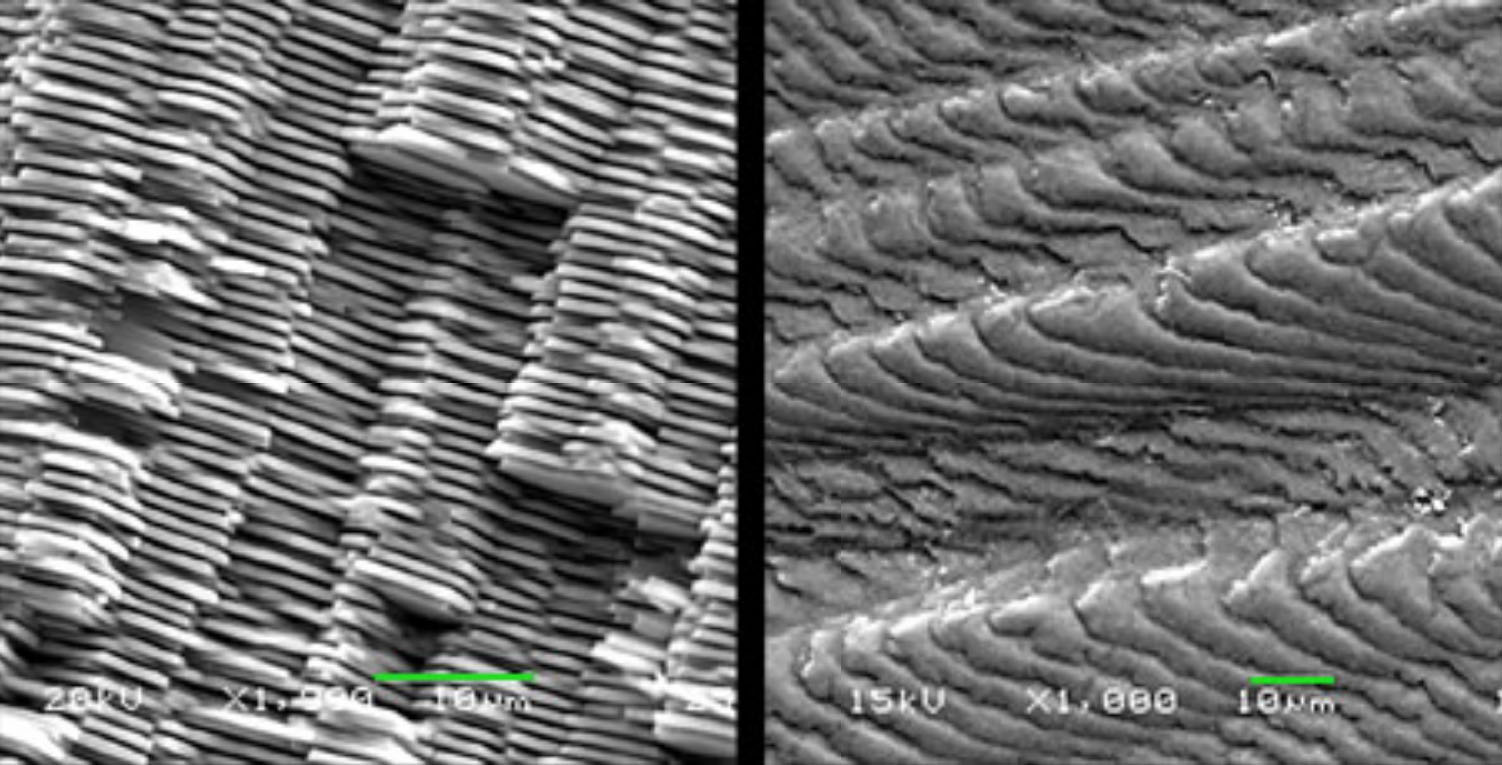 |
 |
 |
 |
 |
 |


| Stacked layers of aragonite tiles Regularly spaced surface grooves | |
| The green bars represent 10 micron. Images ©T L Tan, D Wong & P Lee, Iridescence of a shell of mollusk Haliotis Glabra, Optics Express, Vol. 12, Issue 20, pp. 4847-4854 (2004) |
|